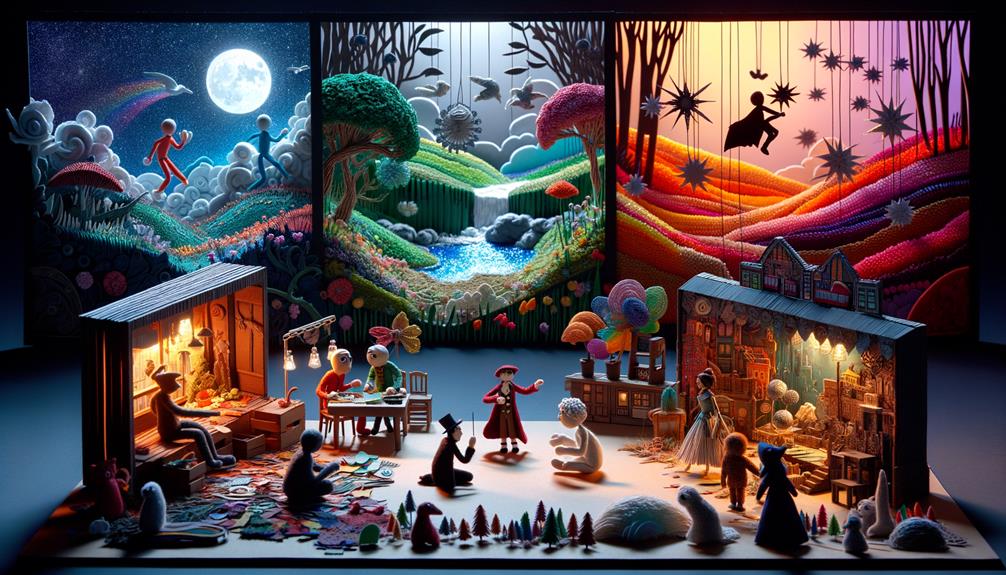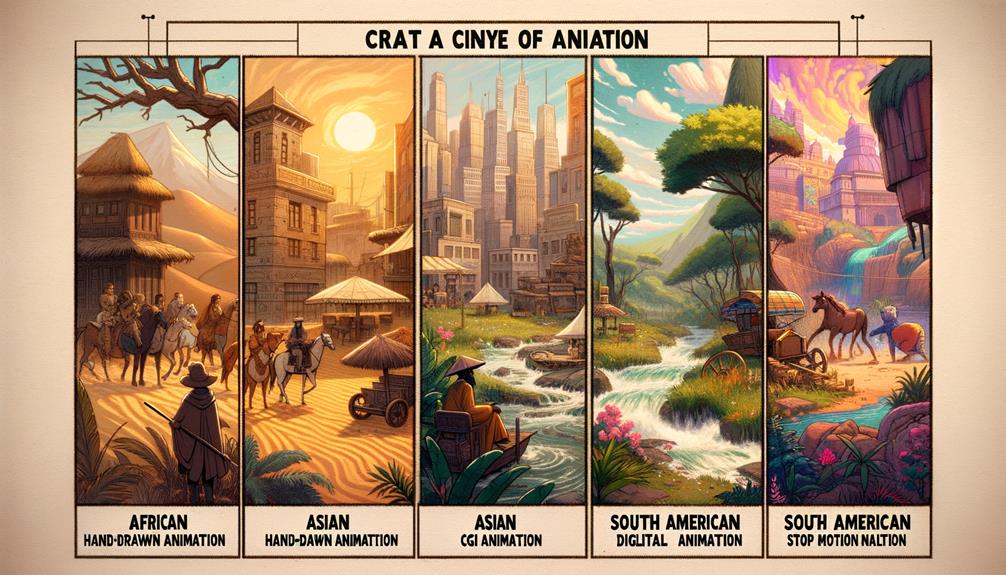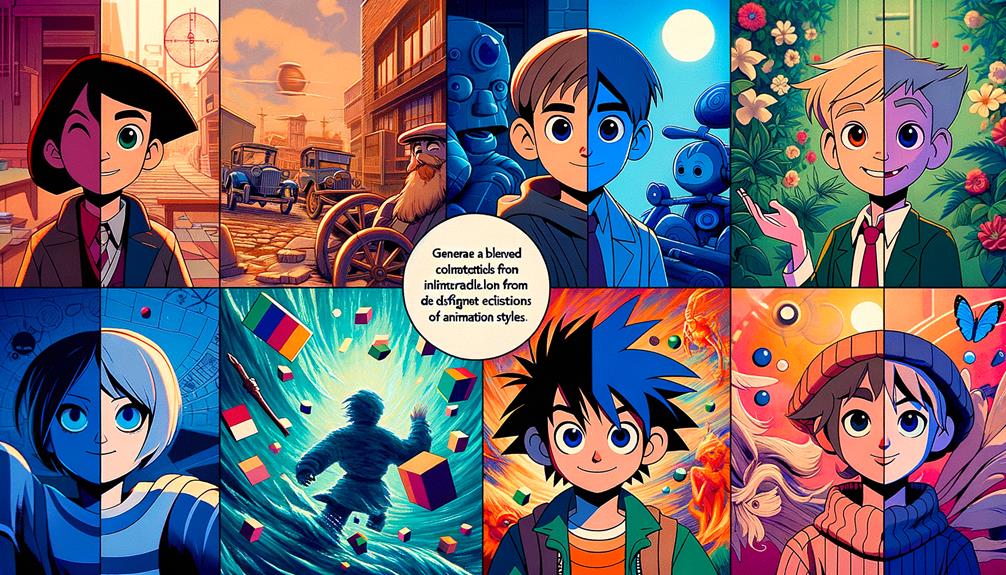In the ever-evolving world of media, animation has gracefully transitioned from its humble beginnings to become a powerhouse of storytelling and visual engagement.
I’ve always been drawn to the artistry and innovation behind animation, and over the years, I’ve observed an intriguing diversity in the styles employed by creators around the globe.
From the nostalgic charm of traditional hand-drawn techniques to the boundary-pushing realms of computer-generated imagery, each style offers a unique window into the storyteller’s vision.
As we embark on this exploration of the top 5 animation styles that have left their mark on media, I invite you to join me in uncovering the nuances and impacts of these artistic approaches.
Key Takeaways
- Traditional hand-drawn animation connects deeply with audiences through its emotional storytelling and retro charm.
- CGI revolutionizes the animation landscape with its realism, enhancing viewer engagement and creative possibilities.
- Motion graphics animation effectively communicates complex ideas with compelling visuals and typography, enriching storytelling.
- Stop motion and mixed media techniques offer immersive experiences by showcasing creativity with inanimate objects and combining various artistic mediums.
Traditional Hand-Drawn Animation

Rooted in the earliest days of cinema, traditional hand-drawn animation remains a cornerstone of artistic expression, intricately blending technique and storytelling.
As someone deeply engrossed in the animation field, I’ve come to appreciate the painstaking effort involved in how these frames are created, each one a testament to the animator’s skill and creative vision.
This animation style, with its retro animation charm, offers a visual style that digital methods struggle to replicate.
The tactile quality of pencil on paper, the slight imperfections, and the fluid motion breathe life into drawings in a way that connects with audiences on a deeply emotional level.
Traditional hand-drawn animation, despite the advent of newer animation styles, continues to hold a revered place in the hearts of those who value the authenticity and timeless beauty of hand-crafted artistry.
Computer-Generated Imagery (CGI)
While traditional hand-drawn animation offers a unique charm, the advent of Computer-Generated Imagery (CGI) has revolutionized the animation landscape, introducing unparalleled realism and dynamic visual possibilities.
As someone deeply entrenched in the animation field, I’ve witnessed how CGI has transformed visual communication, making it a pivotal animation style for creators seeking to deliver immersive storytelling experiences. The ability to integrate realistic elements into animated content allows for more engaging viewer interaction, elevating storytelling to new heights.
CGI isn’t just about aesthetics; it’s about pushing the boundaries of what can be achieved in animation, fostering innovation, and redefining the limits of creativity. It’s a testament to how technology can enhance artistic expression, making it an essential tool in the arsenal of modern animators.
Stop Motion Techniques

Delving into the realm of stop motion techniques, I’ve observed its profound ability to breathe life into inanimate objects, creating captivating narratives through frame-by-frame manipulation. This technique, standing at the intersection of art and technology, showcases a unique blend of creativity and precision.
Stop motion animation encompasses several types, including the timeless charm of clay animation, which allows for a tactile, organic feel that’s hard to replicate in other forms. By meticulously moving and photographing these objects, animators achieve a realistic illusion of movement.
Notable animation examples span from classic children’s shows to avant-garde films, highlighting the versatility and enduring appeal of stop motion. Its painstaking process rewards viewers with an immersive, innovative experience that digital animation can’t quite mimic.
Motion Graphics Animation
Exploring the dynamic realm of motion graphics animation, I’ve come to appreciate its power to convey complex ideas through visually engaging and stylized graphical elements. This style thrives in the digital sphere, blending art and technology to create fluid narratives.
| Feature | Significance in Motion Graphics |
|---|---|
| Typography | Transforms text into compelling visuals |
| Color Theory | Evokes emotions and highlights messages |
| Digital Compositing | Merges various elements seamlessly |
| Timing and Motion | Ensures fluidity and rhythm |
| Visual Effects | Enhances storytelling with dynamic elements |
Motion graphics animation stands out for its adaptability, functioning across various media platforms. It’s not just about making things look good; it’s about crafting messages that resonate. As an experienced animator, I’ve seen firsthand how this style can captivate audiences, making complex ideas accessible and engaging through innovative graphics and animation. A lot of people get confused between motion graphic animation and animation, although similar but not the same, we wrote a blogpost talking about it here.
Mixed Media Animation

After examining the distinct charm of motion graphics animation, I’m now turning my focus to mixed media animation, a style that masterfully combines various artistic mediums to create rich, textured narratives. Mixed media animation stands at the intersection of traditional hand-drawn animation and cutting-edge computer-generated imagery. This fusion not only invites a diverse audience but also echoes retro aesthetics while pushing the boundaries of immersive storytelling.
In my experience, leveraging mixed media animation allows creators to craft visuals that are both nostalgic and innovative. The seamless integration of various techniques enhances the storytelling, making it more engaging and memorable. For those seeking to captivate an audience craving innovation, mixed media animation offers a versatile and dynamic canvas, blending the best of both worlds to tell stories that resonate deeply.
Conclusion
Ironically, after dissecting the top animation styles used in media, it’s clear that our quest for the next big thing in animation often circles back to appreciating the basics.
Traditional hand-drawn frames or the tactile charm of stop motion—techniques that once defined the dawn of animation—are now revered almost as avant-garde amidst the digital frenzy.
As someone who’s navigated the evolving landscape of animation, it’s amusing how innovation leads us back, time and again, to marvel at the roots of our artistic endeavor.





